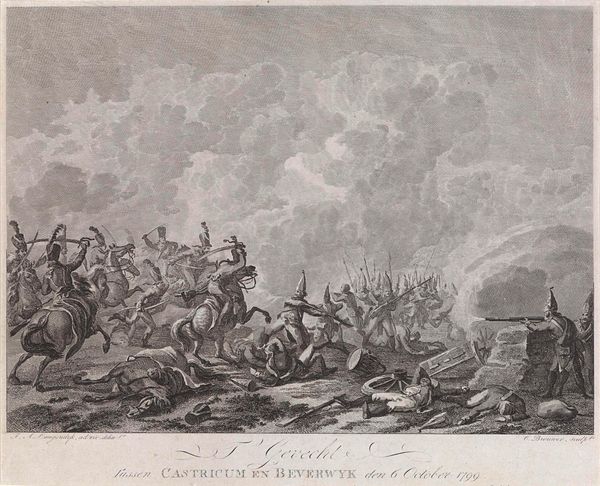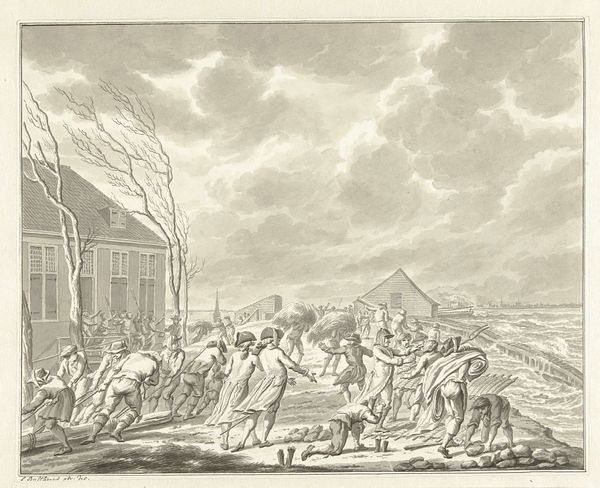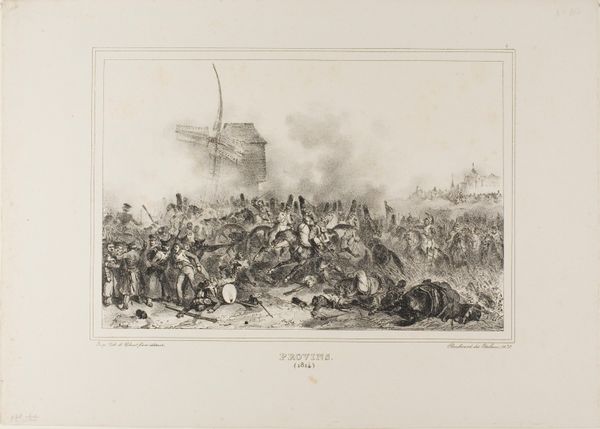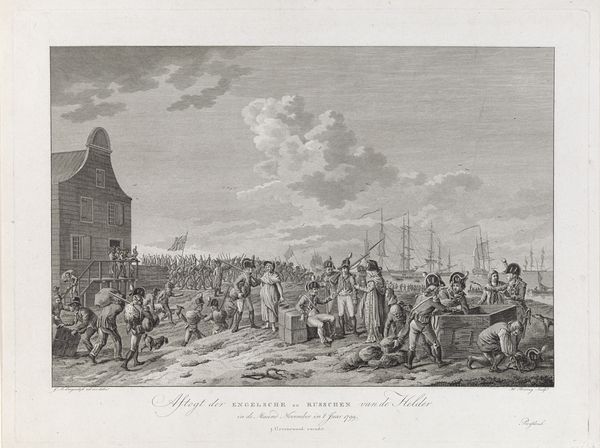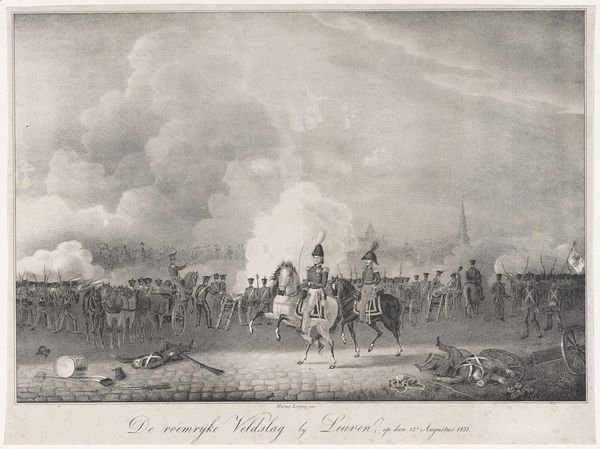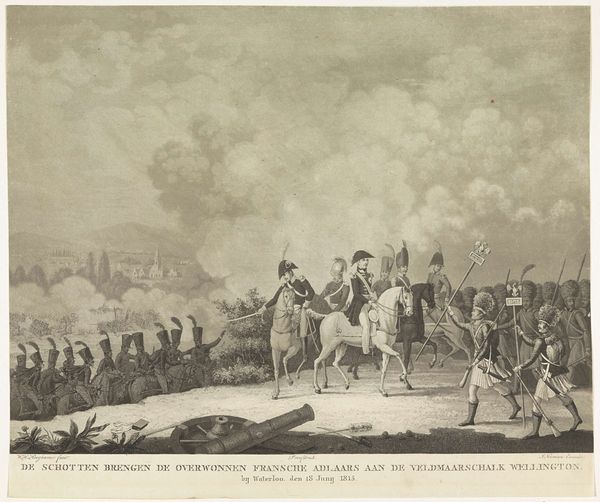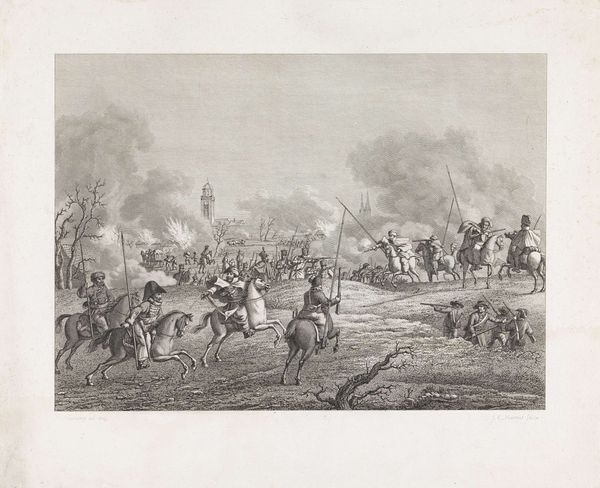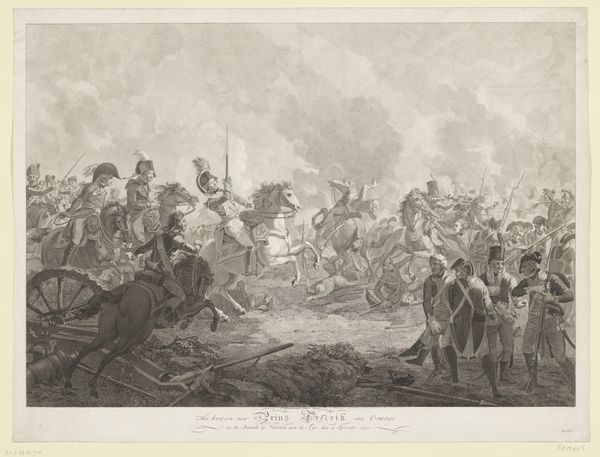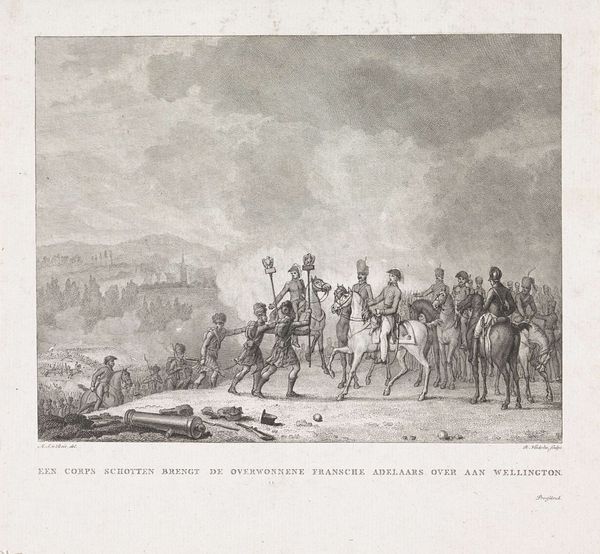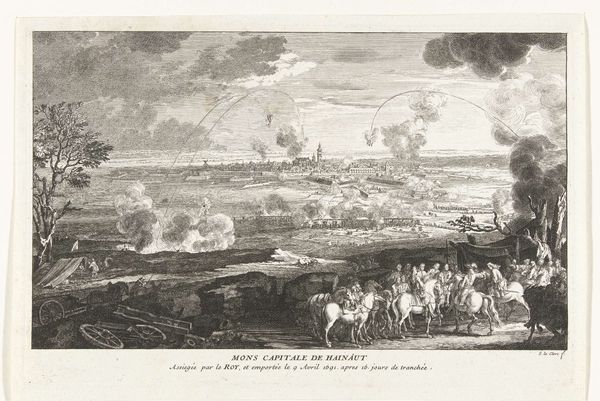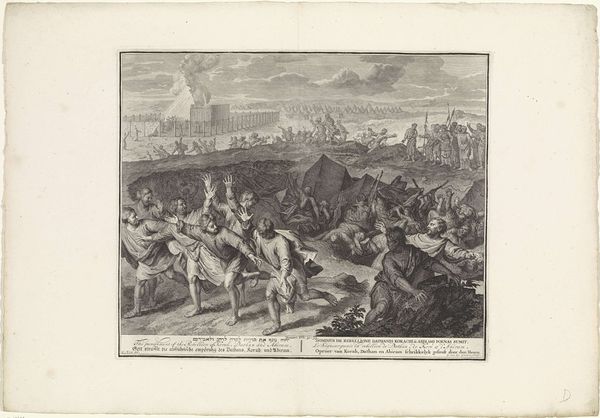
print, engraving
#
neoclacissism
# print
#
landscape
#
history-painting
#
engraving
#
realism
Dimensions: height 242 mm, width 290 mm
Copyright: Rijks Museum: Open Domain
Cornelis Brouwer made this print of the Battle of Bergen from 1799, using etching techniques. The character of etching, with its reliance on acid to bite lines into a metal plate, gives this print a distinctive appearance. Look closely, and you'll notice the crisp, precise lines that define the figures and landscape. These were created by carefully coating a copper plate with a waxy, acid-resistant ground, and then scratching away lines with a sharp needle. The plate was then immersed in acid, which ate away at the exposed metal, creating incised lines that would hold ink. The final print was produced by inking the plate and pressing it onto paper. Brouwer was working at a time when printmaking was not only a means of artistic expression but also a vital tool for disseminating information and propaganda. Prints like these played a crucial role in shaping public opinion and national identity. They were relatively inexpensive and could be easily distributed, making them accessible to a wide audience. The labor involved in producing an etching, from preparing the plate to printing the final image, was considerable, reflecting the intense socio-political context of the time. Ultimately, by focusing on the materials and processes of printmaking, we can better appreciate the artistic and cultural significance of this work.
Comments
No comments
Be the first to comment and join the conversation on the ultimate creative platform.
